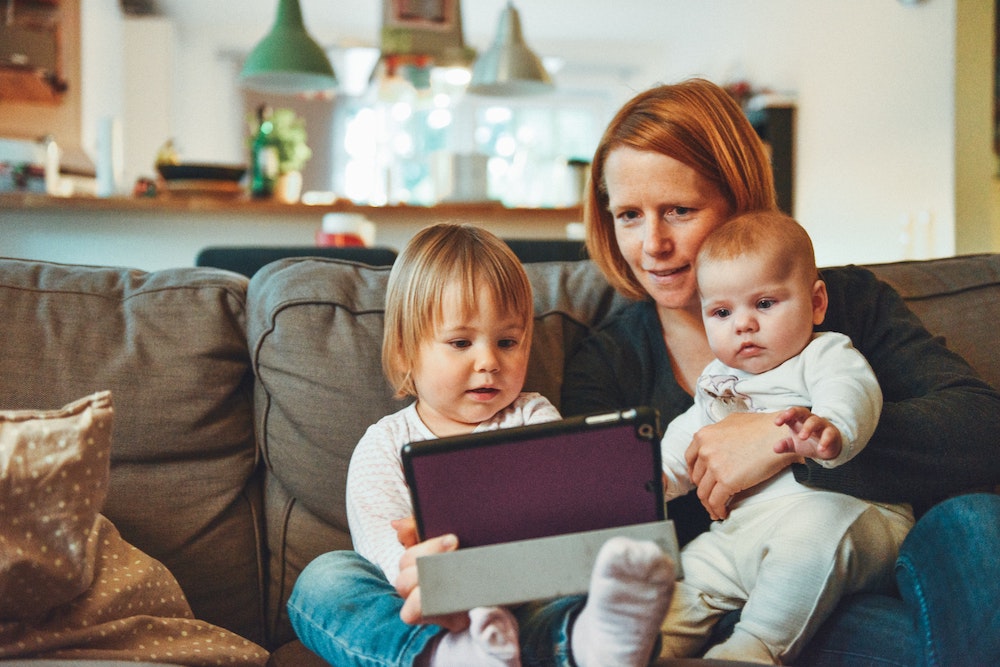
“Femtech funding lags behind the hype,” said Reenita Das of Frost & Sullivan, the firm whose infamous femtech market report helped put the women’s health innovation space on the map back in 2018 in a recent article. And we don’t disagree. Yes, femtech funding indeed lags behind, but the good news is that the times they are changing.
Just last week, we saw Maven Clinic become a unicorn, Carrot Fertility raise its Series C, and multiple other early stage femtech companies like Health in Her Hue announced seed rounds. It’s evident that more and more investors across all stages are starting to see the opportunity in the women’s health space, a sector that has been grossly ignored and underfunded for the longest time.
One of the investors who’s notably bullish about this space these days is Paul Singh, former Partner at 500 Startups, who now angel invests through his company Results Junkies and spends the majority of his time as co-founder & Chief Revenue Officer of Bump Health, a mom-focused DTC company with multiple business lines (including Bump Boxes and others), that he’s planning to expand into the “P&G of the 21st Century”.
He believes that the next big companies in the femtech and famtech space won’t be venture backed and built for a quick exit, but will grow profitably, bootstrap, earn the trust of their affinity groups and slowly dismantle the big incumbents, that dominate the space today. His secret, not-so-secret plan? Build a company that lasts 200+ years, is valued at $200B+ and makes life better for at least 200+ million households. How you may ask? Well. We’ll let him tell you himself… Introducing: Bump Health!
Click here to read the full thread on twitter or read our write-up below:
Bump Health provides centralized access to capital, infrastructure & (soon) brand. As we continue to build/buy additional business units, that centralized structure becomes a no-brainer for anyone building in adjacent spaces to us. But first, some context… 🧵👇
The women’s health space is, generally speaking, dominated by large incumbents. Speaking broadly, taking any serious fight to those incumbents requires a large amount of capital. And by large… I mean LARGE.
The war chest has to be large enough to fight against incumbent brand, history and, in certain segments, regulatory and compliance requirements.
Side note: Don’t even get me started on the typical “this is a relationships business” that’s prevalent with the gatekeepers either. Whoever has the trust of the affinity group has the power. 🤌
But to be clear, real meaningful disruption across the space won’t be led by investor-backed startups. After all, it’s hard to target incumbents that are 100+ years old while tending to the short term IRR needs of angels and VCs.
So, in summary: lots of room to disrupt across women’s health *as long as* you have easy access to capital over a looonnngggg period of time. Best way to do that? Stack the revenue, focus on profits.
Build a subscription DTC box. CAC payback needs to be 2-3 months max. Margins need to be healthy from the start… they’ll naturally improve with scale. (@BumpBoxes 👋)
White label the above, sell it to corporate HR. They’ll pay more than consumers and give you annual contracts with committed revenue. This adds little-to-no complexity to your business.
Expand into medical… things. DME and Telehealth, if you must know. The only real moat here is getting access to the payers. But, if you have heathy profits from your other businesses, you can invest to setup the relationships.
You’ll learn quickly that payers may not give you much attention… until they realize that the affinity group trusts you. And you can, at any time, help the affinity group move to other payers.
Side note: most moms don’t even know that a free breast pump is usually included with their health insurance. Worse yet, they don’t realize that they’re often owed *thousands* of dollars of other products for their pregnancy too.
Let that light a fire in your belly for second… would you let someone treat your mother that way? 🔥
BTW, DME people… spare me your excuses. You’ve had decades to do the right thing for moms. You let the payers control the conversations. It’s ok though, *tens of thousands* of moms opt-in each month to let us extract every dollar they’re owed by their health insurance.
And it’s completely free for mom. I digress…
Then expand into insurance. Life, Home and Auto to start. After all, families need some amount of insurance. It’s the law, in most places. Again, you’ll quickly learn that most carriers don’t want their prices shown alongside competitors.
But, as above, they’ll quickly learn that the affinity group trusts you. If you’re not in the price comparison, it’s ok… but then you’ll never even have a chance to earn the business.
Rinse and repeat, aggressively: Aim to build or buy a collection of businesses that collects $6 out of every $10 dollars spent on the household. Over a ~20 year period. Ask me how I know. 💁♂️
In the process, build in public.
In the worst case, we get no direct benefit but we inspire other entrepreneurs to think even bigger. In the best case, we do that *and* attract forward-thinking entrepreneurs that understand what their possibilities could be if they never had to rely on an outside dollar again.
TLDR: to truly make change across women’s health, you need long term capital and long term vision. The best way to do that is to stack your revenues. Do it in public, attract like minded people. 🚀
So, let’s end this where I started:
Bump Health provides centralized access to capital, infrastructure & (soon) brand. As we continue to build/buy additional business units, that centralized structure becomes a no-brainer for anyone building in adjacent spaces to us.
Please come build with us. We’re interested in dominating the ~20 years of household spend between mom’s decision to conceive and that child’s adulthood.
Imagine how much more you — and your company — could accomplish if you never again had to worry about capital, infrastructure or brand. 🤓
BTW, I understand that some people want to build independently. I get it. I love it. But please don’t be angry if we end up going head-to-head on something, we simply want to make life easier for moms and households everywhere.
We have nearly unlimited access to long term capital now: between our own revenues and my own willingness to financially backstop our company, we will — when necessary — bleed out competition. Financially, legally and otherwise.
This isn’t a threat, I assure you. It’s a peek into the inevitable future. The only companies that should fear us are the middlemen. You know who you are.
We’ve bootstrapped ourselves to $40M in profitable revenue and we’ll continue growing regardless. But there’s always room on the rocketship for like-minded people and companies. 🚀
We’ll hit $1B in top line revenue within the next 5-7 years. I can’t even begin to imagine how much faster we could get there if you joined us. 🙏
If you want to watch us build in public, disrupt the incumbents and/or make life better for every mom you know, smash that follow button: @paulsingh . And, please, share this if it might inspire other entrepreneurs. 🙏
PS- this is our secret plan to build a company that lasts 200+ years, is valued at $200B+ and makes life better for *at least* 200+ million households. If anyone asks, I didn’t tell you this. 🤫
Thoughts? Opinions? Curious? You can learn more about Paul’s work and investment thesis on Results Junkies or follow along on twitter.



